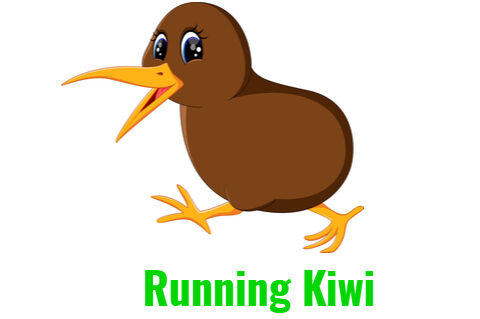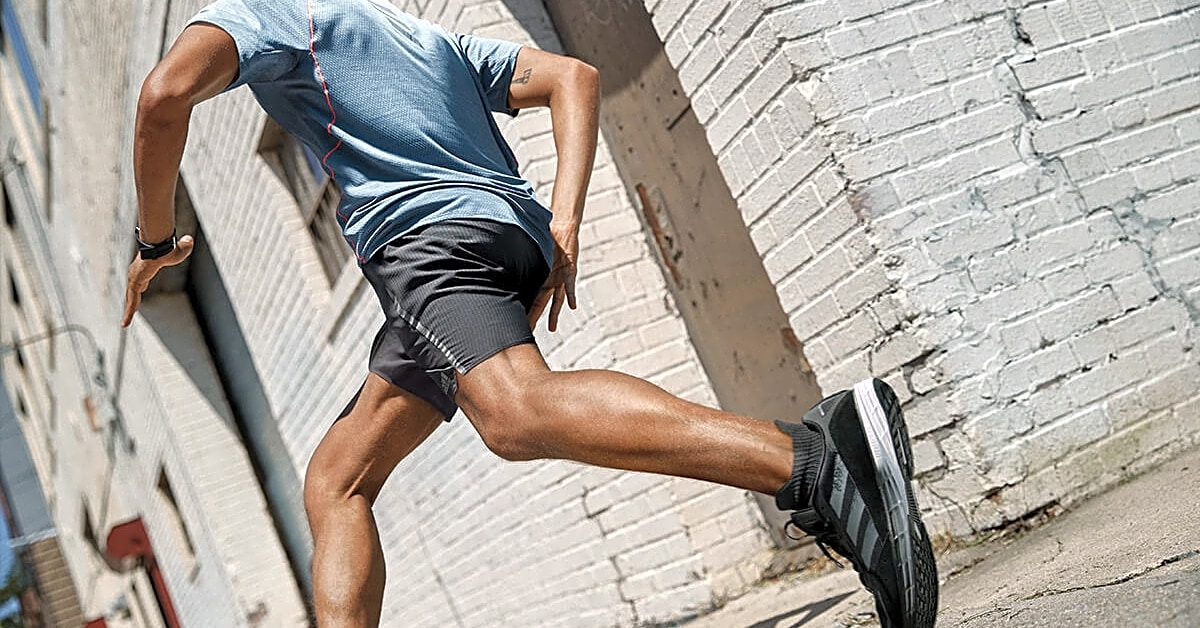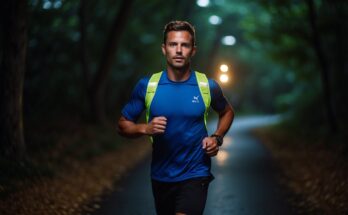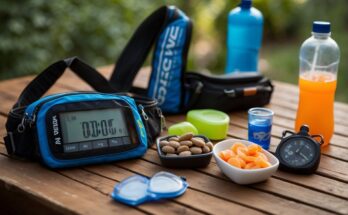Ultra running is a sport that involves running distances longer than a marathon and often tests the physical and mental limits of its athletes. With the intense strain placed on the body during these long-distance endeavors, it is crucial for ultra runners to recover properly to maintain peak performance levels.
One effective method to facilitate this recovery is through massage therapy, which can provide numerous benefits to these dedicated athletes. Massage therapy is gaining popularity among ultra runners, as it can help alleviate muscle soreness, improve flexibility, and reduce the risk of injury.
By targeting the specific muscle groups utilized during ultra running, massage therapists can customize their techniques to address the unique challenges faced by these athletes. From employing deep tissue massage to enhance circulation to using myofascial release techniques to break up scar tissue, massage therapy has become a vital component of many ultra runners’ training and recovery regimens.
Understanding the benefits that massage therapy can offer to ultra runners and implementing best practices in one’s recovery plan can make a significant difference in performance and overall well-being. By regularly incorporating massage therapy into their routines, ultra runners can continue to push their limits and conquer even the most grueling races with minimal risk of injury or setbacks.
The Benefits of Ultra Running Massage Therapy
Ultra running massage therapy is a powerful tool for promoting recovery for athletes, particularly long-distance runners. It improves blood circulation in the muscles, helping to deliver essential nutrients and oxygen to the affected tissues. This, in turn, aids in the repair and regeneration of muscle fibers, mitochondria, and fascia.
Enhanced Recovery
Massage therapy can lead to noticeable improvements in athletic performance. By working to break down adhesions in muscle tissue, massage helps to restore the natural balance and alignment of the body, allowing runners to maintain their optimal form and strength during competition. Furthermore, relaxation and stress relief provided by massage can contribute to mental preparedness, essential for challenging ultra running events.
Improved Athletic Performance
One of the primary benefits of ultra running massage therapy is its ability to alleviate muscle soreness and inflammation. By using targeted massage techniques, a therapist can help release tight or overused muscles, reduce the risk of cramping, and decrease inflammation caused by intense physical activity. Consequently, this results in less pain and discomfort for runners during their recovery period.
Reduced Muscle Soreness and Inflammation
Massage techniques used for ultra running therapy often focus on promoting flexibility and range of motion. By restoring muscle balance and promoting relaxation, runners can experience a greater ability to stretch and move their muscles with ease. Improved flexibility and range of motion can contribute to better running form, reducing the risk of injury in the long run.
Better Range of Motion and Flexibility
Ultra running massage therapy can also have a positive impact on the immune system. Enhanced blood flow as a result of regular massage stimulates the production of immune cells and improves their overall function, helping athletes maintain their strength and well-being, even during periods of intensive training. This increase in immune function can help runners maintain their health and avoid illness or infection that could hinder their performance.
Best Practices for Ultra Running Massage Therapy
Sports Massage Techniques
Sports massage is a specialized form of massage therapy that targets the unique needs of athletes, particularly ultra runners. The primary goal is to enhance performance, reduce the risk of injury, and promote recovery. Some common sports massage techniques include:
- Effleurage: This technique involves long, gliding strokes to warm up the soft tissues and improve circulation.
- Petrissage: The therapist uses kneading, squeezing, and rolling techniques to work deeper into the muscle and relieve tension.
- Friction: This technique involves the therapist applying pressure to certain areas to address adhesions and improve mobility.
- Tapotement: A rhythmic tapping technique used to stimulate muscles and improve circulation.
Self-Massage Tools and Techniques
Ultra runners can also use various self-massage tools and techniques to maintain their soft tissue health between professional massage sessions. Some popular self-massage tools and techniques include:
- Foam rolling: A foam roller is used to apply pressure to the targeted muscle groups, helping to release tension and break up adhesions.
- Massage balls: Small, firm balls can be used similarly to a foam roller, targeting specific areas of tightness and tension.
- Stretching: Regular stretching is essential for maintaining flexibility and preventing injury. Incorporate dynamic stretching before your run and static stretching after.
When to Schedule a Massage
The timing of massage sessions is crucial to ensure the maximum benefit for ultra runners. Here are some guidelines to follow:
- Pre-event massage: Schedule a session 5-7 days before a race to help prepare your body for the event. Focus should primarily be on muscle relaxation and maintaining range of motion.
- Post-event massage: Schedule a session within 1-3 days after the event to facilitate recovery and address any muscle imbalances.
- Maintenance massage: Regular maintenance massages are recommended every 3-4 weeks during training to keep your soft tissues in peak condition and prevent injury.
Incorporating proper sports massage techniques, self-massage tools, and optimal scheduling can greatly enhance an ultra runner’s performance and recovery. Always consult with a licensed massage therapist or a member of the American Massage Therapy Association to ensure that you are receiving safe and effective treatment.
Tips for First-Time Receivers of Ultra Running Massage Therapy
Choosing the Right Therapist
When receiving ultra running massage therapy for the first time, it’s crucial to select a qualified therapist experienced with ultra runners’ specific needs. Look for therapists who specialize in sports massage or have received training in techniques such as deep tissue, Swedish massage, and vibration therapy. It’s common for individuals in this industry to have a diverse skillset, but a background in sports massage will provide the best support to ultra runners. Seek referrals from fellow runners and consider therapists who work with athletes or have a track record of success in treating sports-related issues.
Preparing for the Massage
Before your appointment, take the time to learn about the process and discuss your goals with the therapist. They can teach you what to expect during the session and address any concerns you may have. Ensure proper nutrition and hydration leading up to the appointment, as this will have a positive effect on the therapy’s outcome. It’s advised to avoid eating a heavy meal right before the massage and arrive relaxed and clean.
After the Massage: Recovery and Care
Following the massage, it’s essential to focus on recovery and care. Here are some tips for optimizing the post-massage experience:
- Stay hydrated: As massage therapy can release toxins, it’s vital to replenish with water or a sports drink to aid in flushing them out of your system.
- Sleep and rest: Proper sleep is vital for overall health and recovery, especially after an intense therapy session. Give yourself permission to rest and allow your body to heal.
- Monitor pain and discomfort: Some patients might experience mild soreness after a massage. It’s essential to pay attention to what your body is telling you and communicate any issues with your therapist.
- Ice and heat applications: Applying ice to areas that feel exceptionally sore can help reduce swelling, while gentle heat can aid in healing by promoting blood flow.
- Maintain a healthy diet: A well-balanced diet, rich in nutrients, will support your body during the healing process and enhance the benefits of massage therapy.
In addition to these tips, don’t forget that self-care is an ongoing process. Consider incorporating regular massage sessions into your training and recovery plan. Though a single massage can provide instant relief, consistent treatment may help prevent injury, improve performance, and contribute to an ultra runner’s mental wellbeing by reducing anxiety and stress. Prioritize your health with a quality therapist and relish in the benefits of ultra running massage therapy.
Massage Therapy in Everyday Life
Importance of Regular Massage
Incorporating regular massage into an individual’s routine not only benefits ultra runners but also people leading a busy everyday life. Therapeutic massage promotes recovery in muscles, leading to improved overall performance and a reduction in injury risk. It has also been linked with mitochondrial biogenesis, which is essential for cellular function and energy production. The National Institutes of Health (NIH) in the United States have conducted various studies that showcase the importance of regular massage therapy. Improved blood flow, reduced muscle soreness, and expedited recovery are some of the benefits demonstrated by these studies. Therefore, incorporating massage as a recovery strategy is highly recommended.
Incorporating Self-Care
Self-care is an essential part of maintaining optimal physical and mental well-being. In the context of massage therapy, self-care involves activities complementing professional and therapeutic massage sessions. Here are some self-care practices that can be done at home:
- Stretching: Stretching helps maintain flexibility, prevent muscle imbalances, and optimize muscle function.
- Foam rolling: Foam rolling, also known as self-myofascial release, mimics the effects of massage therapy and can be done at home with a foam roller.
- Rest: Ensuring sufficient rest is crucial for recovery, allowing the body to repair itself and grow stronger.
Nutrition
A well-balanced diet plays a major role in the recovery process, and a well-rounded nutrition plan complements massage therapy. Adequate intake of macronutrients (protein, carbohydrates, and fats) and micronutrients (vitamins and minerals) is essential for optimal performance and recovery. Some key nutrients for individuals engaging in regular massage therapy include:
- Protein: Aids in muscle repair and maintenance.
- Carbohydrates: Essential for replenishing muscle glycogen stores.
- Fats: Provide long-lasting energy and support hormone production.
- Vitamins and minerals: Support muscle function and overall health.
In conclusion, implementing a combination of regular massage therapy, self-care practices, and a well-balanced nutrition plan can significantly contribute to an individual’s overall well-being and recovery process.




